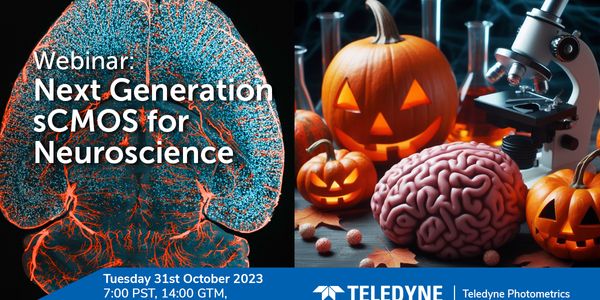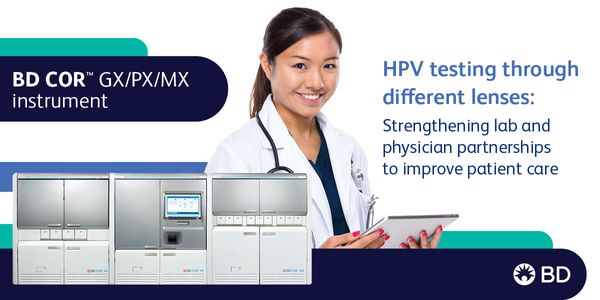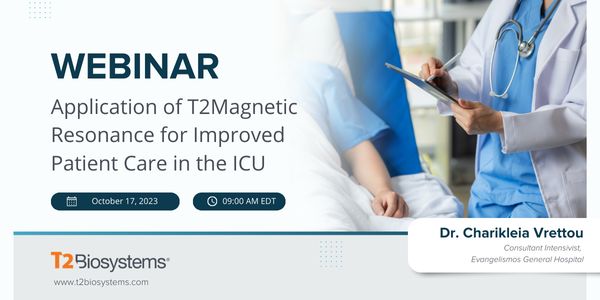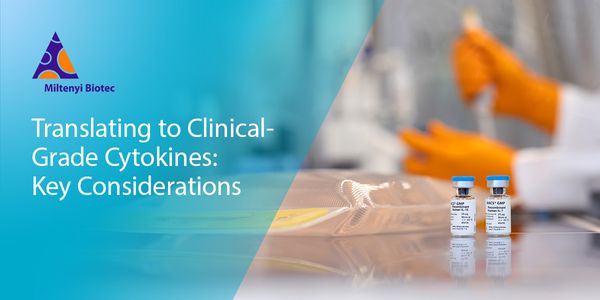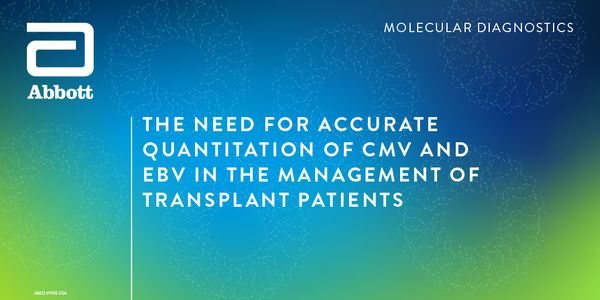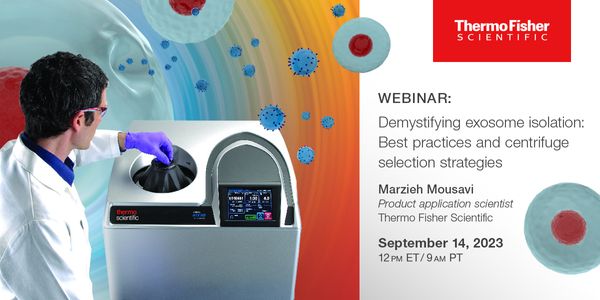Education
Education: the process of learning, or the acquiring of knowledge, skills, values, beliefs, and habits. Methods include storytelling, discussion, teaching, training, and directed research.
-
Spheroids and organoids, two examples of 3D cell culture models, have become invaluable tools to study the processes that dictate behavior of tissues under physiological and pathological con...
NOV 09, 2023 | 8:00 AM
C.E. CREDITS
Tissue microarray combines tens to hundreds paraffin-embedded specimens into a single paraffin block. It is a practical and highly effective tool for high-throughput analyses including valid...
Gynecologic cancers account for nearly 40% of all cancer incidence and >30% of all cancer mortality in women worldwide. In recent years, there have been significant advancements in the cl...
OCT 31, 2023 | 9:00 AM
Gene therapy holds potential for treating neurological diseases by delivering genetic information into specific cell types. However, selective and efficient targeting of cell types remains c...
OCT 31, 2023 | 7:00 AM
Neuroscience focuses on the study of the nervous system: a highly complex, dense, and organized network stretching across the whole body of most organisms. Due to this neuroscience can be a...
OCT 18, 2023 | 9:00 AM
In this webinar, Jenny Meredith, Ph.D., HCLD(ABB), Clinical Microbiology Director at Prisma Health-Upstate joins forces with Sara Ezra, Molecular Supervisor at Pathology Consultants (subsidi...
OCT 17, 2023 | 6:00 AM
During this presentation, the speaker will provide insights into the clinical utility of the T2Bacteria and T2Resistance Panels in the intensive care unit (ICU), including real-world clinica...
OCT 10, 2023 | 10:00 AM
C.E. CREDITS
For patients with advanced non-small cell lung cancer (NSCLC), tissue samples are typically small biopsies. These samples undergo standard of care evaluation for >10 biomarkers to identif...
OCT 10, 2023 | 9:00 AM
Numerous studies have shown that homologous recombination deficiency (HRD) is a genome-wide biomarker present in high grade ovarian and breast cancers. A cancer therapeutic class, PARP inhib...
OCT 10, 2023 | 1:00 AM
Numerous studies have shown that homologous recombination deficiency (HRD) is a genome-wide biomarker present in high grade ovarian and breast cancers. A cancer therapeutic class, PARP inhib...
OCT 05, 2023 | 1:00 AM
C.E. CREDITS
Organoids continue to gain traction in drug discovery efforts as they offer a more biologically relevant disease model than traditional approaches. But they aren't without challenges. Jo...
SEP 26, 2023 | 11:00 AM
Multicolor flow cytometry is beneficial because it allows us to gain deeper insights from a given biological sample, with fewer repeat markers in each tube and quicker results. In this three...
SEP 26, 2023 | 8:00 AM
Join us for an educational webinar that delves into the fascinating world of Extracellular Vesicles (EVs) and their impact on biomedical research and medicine. In collaboration with ExoVecto...
Speaker:
Roland Leathers, PhD
, Jeroen de Vrij, PhD
Sponsored By: Thermo Fisher Scientific/Gibco
SEP 21, 2023 | 8:00 AM
C.E. CREDITS
As the opioid epidemic continues to claim lives and devastate families across the nation and world, we recognize September 21, 2023 as opioid awareness day. Opioids are analgesics with high...
SEP 20, 2023 | 11:00 AM
C.E. CREDITS
Preanalytical errors and unsuitable samples can account for up to 70% of lab errors. 1 These errors can be attributed to improper specimen collection, specimen transportation, and specimen p...
In clinical laboratory settings, tests for coagulation factors are regularly run to test for inherited or acquired deficiencies in patients suspected of ongoing bleeding risk. Available test...
Speaker:
Morayma Reyes-Gil, MD
SEP 19, 2023 | 8:00 AM
C.E. CREDITS
Success stories in the field of cell therapies are making headlines on a daily basis. These achievements involve complex manufacturing processes in which cytokines play a key role. Choosing...
SEP 14, 2023 | 11:00 AM
C.E. CREDITS
In the United States, over 40,000 transplantations are performed annually. Ensuring post-transplant success requires diligent monitoring of infectious diseases that are associated with a wid...
Clinical laboratories generate most of the objective data on which diagnostic, preventive, and therapeutic decisions are made. By considering the current availability of information analytic...
SEP 14, 2023 | 9:00 AM
C.E. CREDITS
Small extracellular vesicles (EVs) and Exosomes released by cells, have gained significant interest in biomedical research due to their potential applications in diagnostics and therapeutics...
SEP 13, 2023 | 10:00 AM
Liquid biopsy is an emerging area of clinical research, particularly in the context of cancer. As a minimally invasive complementary or alternative approach to tissue biopsies, liquid biopsi...
Speaker:
Dr. Eloisa Jantus Lewintre, PhD
, Dr. Gorka Alkorta-Aranburu
, Matteo Allegretti, PhD
Presented at: The Future of Cutting-Edge Genomic Technologies for Liquid Biopsy Cancer Research
Sponsored By: Thermo Fisher Scientific
Sponsored By: Thermo Fisher Scientific
SEP 13, 2023 | 9:00 AM
CRISPR-based forward genetic screens can be used to identify essential genes in proliferating human cell lines. Although environmental factors also influence gene essentiality, most CRISPR-b...
September 13 at 10:00am CEST, 9:00am BST
Webinar airing too early or too late for you? This webinar will also be available: September 13 at 10:00am PDT, 1:00pm EDT https://www.labroots.com/ms/webinar/dpcr-liquidbiopsy-panel-2 and S...
Speaker:
Dr. Eloisa Jantus Lewintre, PhD
, Dr. Gorka Alkorta-Aranburu
, Matteo Allegretti, PhD
Presented at: The Future of Cutting-Edge Genomic Technologies for Liquid Biopsy Cancer Research
Sponsored By: Thermo Fisher Scientific
Sponsored By: Thermo Fisher Scientific
September 13 at 9:30am IST, 12:00pm CST/SGT
Liquid biopsy is an emerging area of clinical research, particularly in the context of cancer. As a minimally invasive complementary or alternative approach to tissue biopsies, liquid biopsi...
Speaker:
Dr. Eloisa Jantus Lewintre, PhD
, Dr. Gorka Alkorta-Aranburu
, Matteo Allegretti, PhD
Presented at: The Future of Cutting-Edge Genomic Technologies for Liquid Biopsy Cancer Research
Sponsored By: Thermo Fisher Scientific
Sponsored By: Thermo Fisher Scientific
Spheroids and organoids, two examples of 3D cell culture models, have become invaluable tools to study the processes that dictate behavior of tissues under physiological and pathological con...
NOV 09, 2023 | 8:00 AM
C.E. CREDITS
Tissue microarray combines tens to hundreds paraffin-embedded specimens into a single paraffin block. It is a practical and highly effective tool for high-throughput analyses including valid...
Gynecologic cancers account for nearly 40% of all cancer incidence and >30% of all cancer mortality in women worldwide. In recent years, there have been significant advancements in the cl...
OCT 31, 2023 | 9:00 AM
Gene therapy holds potential for treating neurological diseases by delivering genetic information into specific cell types. However, selective and efficient targeting of cell types remains c...
OCT 31, 2023 | 7:00 AM
Neuroscience focuses on the study of the nervous system: a highly complex, dense, and organized network stretching across the whole body of most organisms. Due to this neuroscience can be a...
OCT 18, 2023 | 9:00 AM
In this webinar, Jenny Meredith, Ph.D., HCLD(ABB), Clinical Microbiology Director at Prisma Health-Upstate joins forces with Sara Ezra, Molecular Supervisor at Pathology Consultants (subsidi...
OCT 17, 2023 | 6:00 AM
During this presentation, the speaker will provide insights into the clinical utility of the T2Bacteria and T2Resistance Panels in the intensive care unit (ICU), including real-world clinica...
OCT 10, 2023 | 10:00 AM
C.E. CREDITS
For patients with advanced non-small cell lung cancer (NSCLC), tissue samples are typically small biopsies. These samples undergo standard of care evaluation for >10 biomarkers to identif...
OCT 10, 2023 | 9:00 AM
Numerous studies have shown that homologous recombination deficiency (HRD) is a genome-wide biomarker present in high grade ovarian and breast cancers. A cancer therapeutic class, PARP inhib...
OCT 10, 2023 | 1:00 AM
Numerous studies have shown that homologous recombination deficiency (HRD) is a genome-wide biomarker present in high grade ovarian and breast cancers. A cancer therapeutic class, PARP inhib...
OCT 05, 2023 | 1:00 AM
C.E. CREDITS
Organoids continue to gain traction in drug discovery efforts as they offer a more biologically relevant disease model than traditional approaches. But they aren't without challenges. Jo...
SEP 26, 2023 | 11:00 AM
Multicolor flow cytometry is beneficial because it allows us to gain deeper insights from a given biological sample, with fewer repeat markers in each tube and quicker results. In this three...
SEP 26, 2023 | 8:00 AM
Join us for an educational webinar that delves into the fascinating world of Extracellular Vesicles (EVs) and their impact on biomedical research and medicine. In collaboration with ExoVecto...
Speaker:
Roland Leathers, PhD
, Jeroen de Vrij, PhD
Sponsored By: Thermo Fisher Scientific/Gibco
SEP 21, 2023 | 8:00 AM
C.E. CREDITS
As the opioid epidemic continues to claim lives and devastate families across the nation and world, we recognize September 21, 2023 as opioid awareness day. Opioids are analgesics with high...
SEP 20, 2023 | 11:00 AM
C.E. CREDITS
Preanalytical errors and unsuitable samples can account for up to 70% of lab errors. 1 These errors can be attributed to improper specimen collection, specimen transportation, and specimen p...
In clinical laboratory settings, tests for coagulation factors are regularly run to test for inherited or acquired deficiencies in patients suspected of ongoing bleeding risk. Available test...
Speaker:
Morayma Reyes-Gil, MD
SEP 19, 2023 | 8:00 AM
C.E. CREDITS
Success stories in the field of cell therapies are making headlines on a daily basis. These achievements involve complex manufacturing processes in which cytokines play a key role. Choosing...
SEP 14, 2023 | 11:00 AM
C.E. CREDITS
In the United States, over 40,000 transplantations are performed annually. Ensuring post-transplant success requires diligent monitoring of infectious diseases that are associated with a wid...
Clinical laboratories generate most of the objective data on which diagnostic, preventive, and therapeutic decisions are made. By considering the current availability of information analytic...
SEP 14, 2023 | 9:00 AM
C.E. CREDITS
Small extracellular vesicles (EVs) and Exosomes released by cells, have gained significant interest in biomedical research due to their potential applications in diagnostics and therapeutics...
SEP 13, 2023 | 10:00 AM
Liquid biopsy is an emerging area of clinical research, particularly in the context of cancer. As a minimally invasive complementary or alternative approach to tissue biopsies, liquid biopsi...
Speaker:
Dr. Eloisa Jantus Lewintre, PhD
, Dr. Gorka Alkorta-Aranburu
, Matteo Allegretti, PhD
Presented at: The Future of Cutting-Edge Genomic Technologies for Liquid Biopsy Cancer Research
Sponsored By: Thermo Fisher Scientific
Sponsored By: Thermo Fisher Scientific
SEP 13, 2023 | 9:00 AM
CRISPR-based forward genetic screens can be used to identify essential genes in proliferating human cell lines. Although environmental factors also influence gene essentiality, most CRISPR-b...
September 13 at 10:00am CEST, 9:00am BST
Webinar airing too early or too late for you? This webinar will also be available: September 13 at 10:00am PDT, 1:00pm EDT https://www.labroots.com/ms/webinar/dpcr-liquidbiopsy-panel-2 and S...
Speaker:
Dr. Eloisa Jantus Lewintre, PhD
, Dr. Gorka Alkorta-Aranburu
, Matteo Allegretti, PhD
Presented at: The Future of Cutting-Edge Genomic Technologies for Liquid Biopsy Cancer Research
Sponsored By: Thermo Fisher Scientific
Sponsored By: Thermo Fisher Scientific
September 13 at 9:30am IST, 12:00pm CST/SGT
Liquid biopsy is an emerging area of clinical research, particularly in the context of cancer. As a minimally invasive complementary or alternative approach to tissue biopsies, liquid biopsi...
Speaker:
Dr. Eloisa Jantus Lewintre, PhD
, Dr. Gorka Alkorta-Aranburu
, Matteo Allegretti, PhD
Presented at: The Future of Cutting-Edge Genomic Technologies for Liquid Biopsy Cancer Research
Sponsored By: Thermo Fisher Scientific
Sponsored By: Thermo Fisher Scientific





